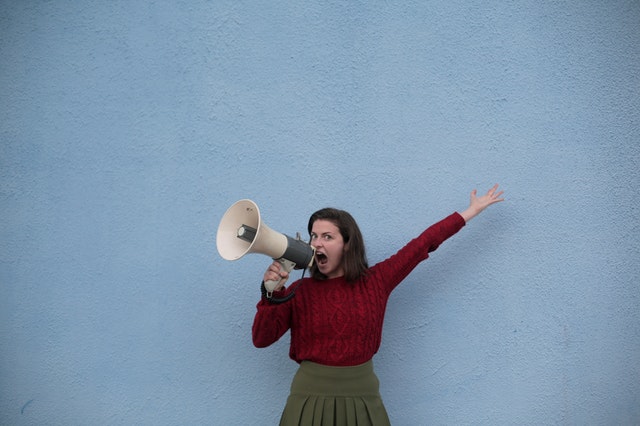Some people have a tendency when they have a startup idea, to keep it under wraps lest someone steal it from them.
I do relate to this fear, but I have the understanding and experience that it’s the execution of an idea that is the more difficult part and which serves as the barrier for most ideas to not become a reality.
Instead, I chose to talk about Prodana with anyone who would listen.
I gained several things from this. First off, it kept my excitement going – I got a lot of positive feedback from people, and although that’s not enough fully prove that an idea is a good one, it definitely helped my motivation.
In addition, explaining the idea over and over again forced me to articulate it more clearly. At it’s root, Prodana is quite simple and is trying to do something very simple, yet it does have several continuously moving parts the feed from one role to the next – there are Practitioners, Clients, and Contributors and each one has an impact on the other.
On top of this, Prodana is a very novel concept, and people struggle to see how it could possibly become a reality. Can anyone really make money without collecting it up front?
I find myself customizing my pitch to each person I talk to, based on what I think will resonate with them the most. Over time though, I found multiple themes crystalized for me, when sharing my vision and inspiration for the concept.
1. My Passion for Mental Health.
I often start with my journey through mental health. How it completely changed my life and helped me overcome anxiety and trauma. I explain how, in my own practice, I committed to helping others get the help they need regardless of whether they can afford it or not.
I talk about how therapy can have a life long impact. How it can take someone from the depths of despair and help them become thriving and successful individuals. I experienced this firsthand, and have eternal gratitude to individuals who helped me years ago. If those people had a Prodana page, I would gladly go back and make a contribution to it, so that they may help others as well.
If we can break out of the transactional nature of therapy, where I pay for an hour and it’s over, we can move to one that allows people to financially express the full nature of their gratitude, which is far more than just $125 an hour.
2. It’s like your Alma Mater
Sometimes I make a comparison to people’s Alma Mater, the university they graduated from. Universities raise billions of dollars every year from their Alumni by maintaining an ongoing relationship with them. There is an understanding that the knowledge gained and relationships fostered during those formative years in university, help people achieve the successes they do later in life. And there is an understood social value of turning back around and making sure those opportunities are available to the next generation, in the form of scholarships, new buildings, and endowments. This gratitude exists even if you’ve paid a steep tuition yourself!

Well, what if we looked at our therapists the same way? They too help us find insight and form healing relationships that we carry with us far after we end our treatment series. We can look at the successes we achieve, financially, in relationships, in our general emotional state of wellbeing, and trace it down to those hours spent in the study of our own psyche.
Yes, it was us who did a lot of the work. Yes, maybe we also paid the therapist for their time. But just like the hours we spend studying and the university library, and the thousands we spend on tuition do not defray our gratitude towards the institution, so too our gratitude towards those who helped us get where we are today can be expressed financially for the betterment of others.
3. My Experience with Vipassana
My 3rd approach involves telling my own story from my Vipassana meditation retreat, the one that inspired this entire idea. I talk about how the meditation I learned to do was life changing, and how the entire experience was free, paid for by others. How you aren’t allowed to contribute until you finish your retreat, and how all contributions are anonymous and go towards others having the same experience.
This example is the most concrete proof that the concept of pay it forward crowdfunding can function in the real world, raising millions of dollars a year for the various meditation centers scattered around the globe. There too, naysayers questioned the sanity of the founder, Goenka’s, decision to make it free, claiming it would unsustainable; his choice, which ultimately proved itself correct, continues to inspire our own leap of faith about the inherent goodness of humanity and the power of generosity.
4. It Takes a Community
We do not live in a vacuum. I believe that when others around us have improved mental health, it benefits all of us. I would like to see the responsibility for mental health be seen as a collective communal one, with the therapists and healers at the forefront, but supported by the people around them.
They are like a miniature non-profit of one, motivated by a sense of altruism and making an impact on the community as a whole. That’s why Prodana strives to do so much of the heavy lifting around marketing and reporting impact; typically a non-profit might have an entire department doing this, but here you have just one therapist, with limited hours, who is far better at listening to others than collecting reviews and invoices or marketing themselves.
Who is better suited to appreciate the impact a therapist can have, than the people who have already benefited from them? That’s why I believe the support should start there – but not end there, because even people who have not worked with the specific healer, or even with a therapist in general, might still appreciate the impact that they are making.
That is why I encourage every new practitioner to share their page with their local community, I myself received hundreds of dollars from people who know me, and resonated with my message of hypnotherapy for all, when I shared my page.
Multiple different approaches to the same core idea. Which angle resonates with you the most?

